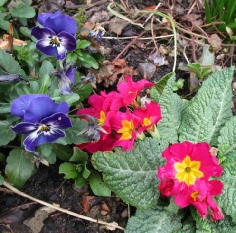






The Joy of Change
Now I am sure we have veered in this direction before, but the coming of Spring has to be a time when it is essential for everyone with anything from a postage stamp size garden to a couple of acres to gaze out, open the door, sniff the breeze and then amble, (or simply stand if it’s a ‘postage-
Writing at the beginning of Spring, means looking for new signs of life in the garden and if you have come to appreciate your garden (as we hope these pages over the years will have helped happen, especially for beginners) it will be those signs of new life that bring a thrill. Of course, this will depend, in a large measure, what you put in last year. Bulbs don’t grow where no bulbs were before, but once they are in, watch out for them to multiply in the ground each year.

Last year my wife got into miniature bulb plants and so, almost magically it seems, we have little clumps of miniature daffodils popping up at the base of several trees in the garden, while in the main beds clumps (they look best in clumps) of their big brothers or sisters are also coming into flower. Tulips are in full leaf and Aquilegias are beginning to show new signs of life. It is interesting that a good number of these new flowers are blue. Primulas and a few Winter-

But as you meander around your patch you start to notice things that last year you had refused to be bothered with – there was too much else to do. In the background there was that tree – or was it a bush – that had flourished over the years but last year had decided its time was up. For whatever reason it died and so there now, yes admittedly in the background, is this large bare carcass of twigs and branches which the birds delight to perch in but which is no longer of use to them for nesting and now leers at me as a blot on the growing landscape. You may have your own echo of glories of the past just sitting there, waiting, as if to say, ‘well, come on now, what are you going to do about me?’ The answer is lots of pruning and sawing and digging out roots and checking to see if there are signs of causes of its demise. Then comes the question, what do we replace it with? This is clearly going to be this year’s ‘project’. Under it had stood, largely hidden by its branches and ‘bushery’, an old shed which now is exposed and shouts to be removed. But again, what to do with the space?

These are, I think, some of the real joys of the garden at this time of year, observing the new life emerging and facing up to the changes that need to be brought. And that is without any thought to buying and sowing new seeds, buying and growing on small plug plants and all the rest that speaks to the future. Change, they say, is here to stay – and ‘they’ are right! Isn’t it wonderful when it’s your garden!






